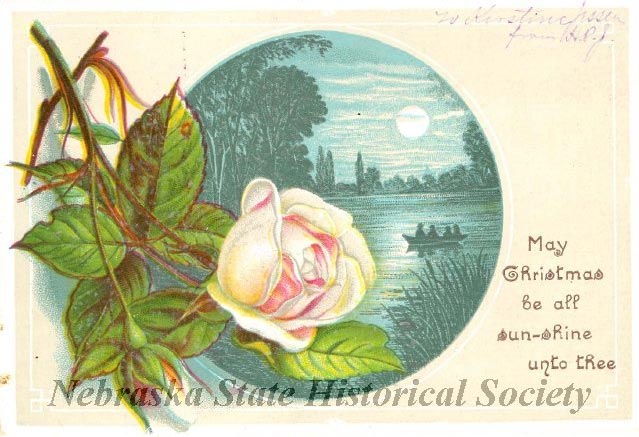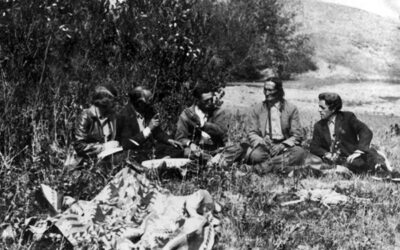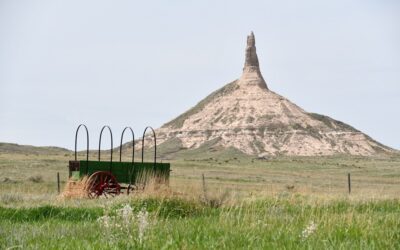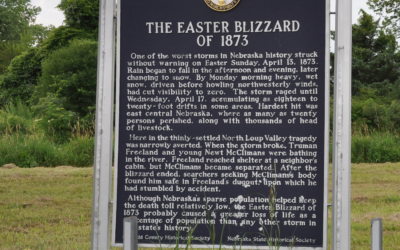The Christmas of 1889 in Omaha was memorable chiefly for the record high temperatures recorded there. The Omaha Daily Bee on December 25, under the headline “Mid-Summer Christmas Eve,” reflected the astonishment of local holiday observers who experienced anything but a white Christmas. The Bee said:
“It may be doubted if Christmas eve in Omaha was ever characterized by the summer weather which prevailed yesterday. The thermometer at noon noted 73 degrees. [Official records listed a high of 68 degrees, still the warmest December 24 in Omaha’s history.] Accordingly, heavy coats were cast aside, doors and windows were opened and in the hurrying throng on the crowded thoroughfares men rushed hither and thither in their shirt sleeves. The most delicate fruits stood upon the hucksters’ stands, and horses on cars and private vehicles were bathed in perspiration.
“This unprecedented condition of the weather was the cause of unusual comment. It was appreciated by everybody except those whose line of business comprehends goods which are in demand in wintry weather. Many of these, however, jocularly, remarked that they intended to place again upon their shelves the unsold stock of the past spring and summer.
“To the poor and homeless the weather has been a benediction. They have been spared the suffering and misery of cold in wretched hovels and tenements, while thousands have had their season[al] outdoor labor extended and their income swelled by what otherwise would have been unearned dollars.”
On its editorial page, the Bee noted: “It is an ill wind that blows nobody good. While the coal dealers are shivering for want of sustenance and the icemen are praying for a blizzard the mechanics and men engaged in the building trades are singing on the scaffolding and on the roofs, blessing the Lord that the weather has been tempered to them.”
Omaha’s welcome reprieve from winter weather was brief, however. On December 28 a thunderstorm with lightning, torrential rain, and then hail struck the city. The Bee said the next day: “About 7 o’clock the rain ceased and the wind began rising, blowing from different points of the compass, but gradually settling down to a northwester. At 10 o’clock the temperature began falling rapidly and the wind continued to increase in force until at midnight it had attained a velocity of nearly forty-five miles per hour, blowing in irregular gusts.” Temperatures were expected to reach fourteen degrees above zero by the morning of December 29. Winter had returned.

This Christmas card from 1880 depicted a warm-weather scene actually experienced by Omahans on the holiday in 1889. NSHS 3832-136



